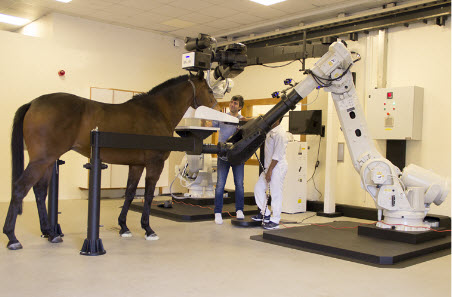Eating quality objective measurement next frontier
Meat & Livestock Australia (MLA) will invest nearly $28 million in new research into the objective measurement of eating quality – both on-farm and in processing units during the next five years.
The new research was announced by MLA Managing Director Richard Norton at the 2017 Yulgilbar Beef Expo & Forum in northern NSW.
The research will be funded through MLA Donor Company (MDC) and involves three key projects that are critical to the red meat industry’s research and development investment in objective measurement systems.
The new body of research builds on recent advances in objective measurement for lean meat yield through DEXA technology – allowing for objective measurement across all the animal productivity components including eating quality and animal health.
The three key research projects will focus on:
- Utilising baggage CT scanning for the red meat industry generating an increased amount of objective measurement data (including animal health disease identification and eating quality) as well advancing boning automation
- Utilising aviation CT scanning in various parts of the value chain, including the scanning of live animals
- Converting CT scanners currently used in the horse racing industry to help determine eating quality measurement of beef and lamb carcases – as well on live animals on-farm.
MLA Managing Director Richard Norton said this research represented the next frontier in the development of objective measurement systems across the red meat industry and will be vital in providing more thorough and balanced feedback both on-farm and in the processing sector.
“Objective measurement systems are vital for our industry to make precise assessments and support informed commercial business decisions,” Mr Norton said.
“We have seen the red meat industry endorse and embark on the commercial rollout of objective measurement technology for lean meat yield through DEXA - and this funding will allow us to ignite the next phase of research to ensure there is the opportunity to provide more comprehensive feedback through the supply chain.
“Importantly, this research will look at converting this CT technology for use in the processing sector as well as on-farm with live animals.”
Mr Norton said the three projects will be co-funded through MDC with matching contributions from commercial operators.
“MLA can announce it will partner with 4DDI on the research to convert the use of CT scanners from the horse racing industry, with further details on the rest of projects to be made in the coming months.”
4DDI’s equine CT scanner is a solution recently developed and commercialised for vets to scan race horses whilst standing and it is anticipated this technology could complement the use of DEXA units in the processing sector, specifically for eating quality. The system is expected to also be developed for live animal health and eating quality measurements for use in feedlots and on-farm.

"CT scanners currently used in the horse racing industry to help determine eating quality measurement of beef and lamb."



